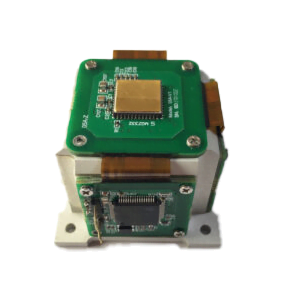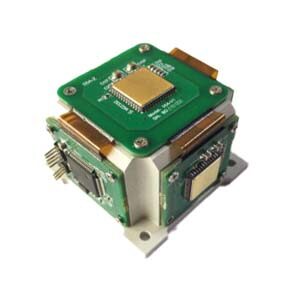Vibration correction error (VRE) is the response of the accelerometer to ac vibration (rectified to dc), which is taken as the abnormal deviation of the accelerometer misalignment. In applications such as the inclinometer, this is a significant source of error because the accelerometer's dc output is the target signal, and any misalignment change can be misinterpreted as a change in inclination, resulting in errors all the way down, which can lead to misfiring of the safety system, platform stabilization, or over-compensation of the drill mast alignment mechanism.
VRE is highly dependent on the vibration characteristic curve experienced by the accelerometer, and may vary depending on the vibration mode applied to the accelerometer. Vibration correction has many mechanisms, two of which are discussed in this paper.
Asymmetric rail
The first mechanism is asymmetric orbits. Gravity produces a static 1 g (9.8 m/s2) acceleration field, and when the accelerometer sensitive axis is aligned vertically, its measurement range will be offset. When the sensor with a full range of 2 g is aligned with the gravity acceleration, only 1 g of peak vibration can be measured, otherwise the response will be clipped. The mean value of a symmetric excitation signal greater than 1 g will not be zero because the level will be clipped in the direction of the additional 1 g acceleration.
Vibration correction diagram for accelerometers with a full range of + / - 2 g due to asymmetric clipping.An exciting vibration signal is applied to a 2 g full range sensor. When the vibration is 0.3 g RMS (between 300 and 600 samples), there is no observable deviation from the misalignment. However, when the vibration is 1 g RMS (between 600 and 1000 samples), VRE is about -100 mg.
VRE can be modeled as an average offset of a truncated distribution, limited by the accelerometer's full range range. When a sensor is subjected to random vibration in a 1 g field, the input excitation signal can be modeled as a normal distribution of average value = 1 g and standard deviation sigma = X, where X represents the root mean square value of the input vibration amplitude. The sensor output is modeled as a double-truncated normal distribution, and the lower and upper bounds of the output values are -r and +R respectively, where R is the maximum range of the sensor. The average value of the double-truncated normal distribution is calculated as follows:
Scale factor nonlinear error
The nonlinear error refers to the deviation between the output of the accelerometer and the best fitting line in the working range. This deviation is often expressed as a percentage of the full scale output range. The nonlinear error of the accelerometer may cause VRE.
Amplitude and frequency dependence of vibration correction
When the vibration amplitude is very small, VRE is mainly nonlinear to the sensor; however, when the vibration amplitude is greater than the full scale range, VRE is often mainly asymmetric clipping described in the above part. Any non-zero misalignment of the accelerometer output will also cause asymmetric clipping. Most MEMS accelerometers designed for industrial applications have built-in fail-safe circuits that turn off the sensor bias circuit when there is a lot of vibration, preventing damage to the detection element. When the vibration amplitude is large, this characteristic may further cause abnormal migration in the misalignment and worsen VRE.
VRE often has strong frequency dependence due to various resonances and filters in devices. Due to the resonator's bipolar response, at the resonant frequency of the sensor, the MEMS sensor resonance amplifies the vibration, and the amplification ratio is equal to the resonant quality factor, while the vibration is suppressed at higher frequencies. For a sensor with a higher resonant quality factor, the larger the vibration amplitude, the larger the VRE. Due to the integral effect of vibration in high frequency bands, larger measurement bandwidths also cause higher VRE. Analog and digital filters implemented in the signal processing circuit can suppress out-of-band vibration peaks and harmonics at the output, but have no significant effect on VRE because the vibration input is nonlinearly rectified to a DC signal an even number of times.
If you want to get more details about MEMS accelerometer,pls visithttps://www.ericcointernational.com/accelerometer/mems-accelerometer/
More Technical Questions
1.Application of MEMS Accelerometer in North Finder
2.How to choose a MEMS accelerometer?
3.Application of mems accelerometer in petroleum logging
4.Application of MEMS Accelerometer in North Finder
5.What is Sensitivity and Measurement Range in Quartz Accelerometer?
6.Quartz Accelerometer VS MEMS Accelerometer
Products in Article




.jpg)


